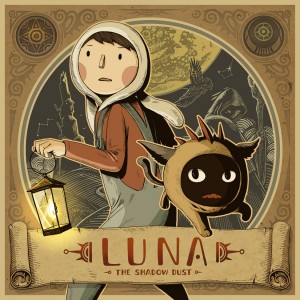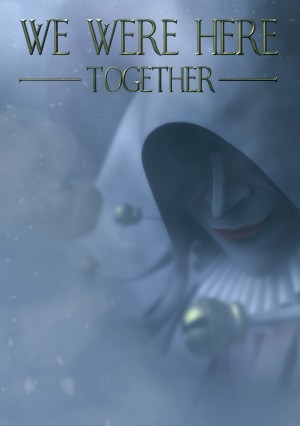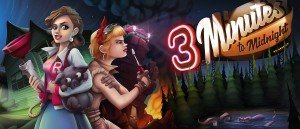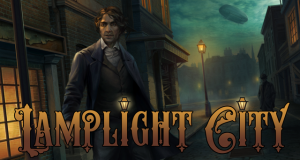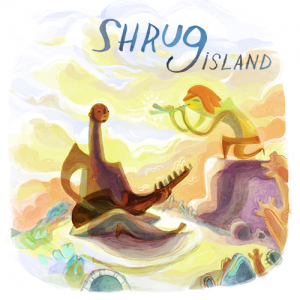EGX Rezzed 2019 round-up

For the sixth year in a row, a warehouse in Wapping, London recently played host to a crowd of cosplayers, developers, gaming enthusiasts and *ahem* journalists, all uniting under one very high roof for EGX Rezzed. The event, held over three days, may well be the younger and smaller brother of EGX (previously Eurogamer Expo), normally held later in the year in the UK, but there were still well over 150 games to try and thousands of eager members of the public very willing to play them.
 Rezzed has always had a strong focus on independent titles, and it was apparent from the two huge rooms displaying only indie games, plus several smaller areas exhibiting the work of developers such as Tim Schafer’s Double Fine, that this year was no different. My first journey into the catacombs of the Tobacco Dock was to visit The Leftfield Collection, a room which showcases the more eclectic side of the event. Here a hilarious party game where aliens have copied the Olympic Games but gotten everything wrong (Drink More Glurp) was joined by a beautifully black and white illustrated beat-making project (Haunted Garage). I was eager to try out The Case of the Invisible Wizard, the second installment of Grace Bruxner’s delightfully whimsical cartoon adventure series Frog Detective, where you play – what else? – a detective who’s a frog. Much like its predecessor, the sequel has charming absurdity in abundance, including a singing rhino, so what’s not to love? The amphibious investigator should be coming to a Windows or Mac PC near you later this year, along with his adorably weird friends.
Rezzed has always had a strong focus on independent titles, and it was apparent from the two huge rooms displaying only indie games, plus several smaller areas exhibiting the work of developers such as Tim Schafer’s Double Fine, that this year was no different. My first journey into the catacombs of the Tobacco Dock was to visit The Leftfield Collection, a room which showcases the more eclectic side of the event. Here a hilarious party game where aliens have copied the Olympic Games but gotten everything wrong (Drink More Glurp) was joined by a beautifully black and white illustrated beat-making project (Haunted Garage). I was eager to try out The Case of the Invisible Wizard, the second installment of Grace Bruxner’s delightfully whimsical cartoon adventure series Frog Detective, where you play – what else? – a detective who’s a frog. Much like its predecessor, the sequel has charming absurdity in abundance, including a singing rhino, so what’s not to love? The amphibious investigator should be coming to a Windows or Mac PC near you later this year, along with his adorably weird friends.
Everyone and his dog at Rezzed seemed to be queuing up to play Untitled Goose Game in the Nintendo Switch area, and who was I to stand out from the crowd? Another for fans of titles that explain themselves, you play a naughty goose whose sole aim is to piss off a farmer as creatively as possible – whether by stealing his thermos, turning on the hosepipe or chucking his rake into the lake. Developer House House has really put some time into getting the comical waddle of its pastel-shaded goose just right, and few could resist the chance to sneak around the poor farmer’s allotment, causing general mayhem whilst honking brazenly (yes, there’s a button specifically assigned just for honking). Get ready for all kinds of fowl play (sorry) when the game comes to PC and Switch later this year.
 |
L-R: Dan Marshall, Dave Gilbert and Jessica Saunders share a panel on the state of adventure games
|
Not a year goes by when someone somewhere doesn’t hold another talk on the future of adventure games, so it was good of Rezzed to claim this year’s allocated spot nice and early. Wadjet Eye’s Dave Gilbert, Dan Marshall from Size Five Games (Time Gentleman, Please!), and Jessica Saunders from Salix Games (Dance of Death: Du Lac & Fey) reflected on their own experiences playing and making adventure games in an increasingly broad market. Whilst all agreed that adventures weren’t going away any time soon, each had something to say about the issues facing the genre in 2019, particularly the trade-off between moving on from traditional point-and-click fare with a smaller budget to bigger yet costlier productions involving voice acting. Kickstarter – still used by many smaller indie developers especially for adventure games – was discussed at length by the panel, with Jessica passionately declaring that “Kickstarter is dead for games”, down to how few people truly understand the cost of making them. But there was positivity to the discussion about how so many indie studios, particularly Wadjet Eye and their latest title Unavowed, had defied naysayers about the adventure game market with its huge success, and if developers kept looking to innovate rather than just replicate the familiar conventions of old, how bright the future could be.
That optimism certainly was reflected in the exciting range of diverse adventures ready to be played and previewed at Rezzed. Here are just a few of the games that really caught my eye…
Close To The Sun
 |
Game Designer Joel Hakalax |
“BioShock” must be a word that developers Storm in a Teacup hear a lot when showcasing their first-person 3D horror adventure set aboard a seemingly abandoned ship shrouded in mystery. However, when I caught up with Game Designer Joel Hakalax at Rezzed, he told me the team high five whenever the “B-word” is dropped – because what small developer wouldn’t want their game to be compared to such a highly regarded AAA title, even if it does belong to an entirely different genre? In Close to the Sun, you play journalist Rose Archer in a wonderfully realised alternate world, where, in Joel’s own words, “inventor Nikola Tesla didn’t get screwed over by Thomas Edison, and all of his ambitions came to fruition.” This, in practice, means that Tesla becomes the Elon Musk of his time and builds a ship called the Helios, which attracts scientists from all over the world to experiment and collaborate together, free from interference.
Inevitably something goes very wrong on board, and the story starts with Rose answering the call from her scientist sister to come and visit her on the Helios. Upon her arrival, however, she finds all signs of life worryingly absent. Whilst there are definite jump scares and “live or die” survival moments encountered, Hakalax told me these horror elements will be more to keep the player on their toes – you won’t be using weapons or any form of magic to defend yourself. The demo I played highlighted the eerie atmosphere as you explore the deserted Helios, from its creepy sound effects of doors suddenly closing to the beautiful faded Art Deco design of the ship’s interiors.
Close to the Sun will be released on May 2nd of this year exclusively on the Epic Games Store, and then on consoles in autumn and possibly also Steam. Bring plenty of cushions to hide behind.
LUNA: The Shadow Dust
 |
Art Director Beidi Guo |
I first got a glimpse of LUNA: The Shadow Dust, the quirky and really quite gorgeous looking hand-animated puzzle adventure from Lantern Studio, at the slightly smaller AdventureX games convention at the British Library in November. I can happily report that its charming silent narrative following a boy and a cute squishy cat thing (really the best description for it) as they bop along solving puzzles based around the theme of light and darkness is still as enjoyable and engaging as back then. Beidi Guo, the game’s Art Director who chatted with me at Rezzed, cites Japanese film legend Studio Ghibli and games like Amanita Design’s Samorost and Machinarium as her influences for the game’s style – both very apparent in the demo I played.
You can switch between both nameless boy and cat thing to solve the intricate puzzles throughout the game, and Guo told me that whilst you’ll only be able to play as the two main characters throughout the game, one of them won’t take their true form until later on (my money’s on squishy cat thing). Amazingly, but perhaps unsurprisingly for a team of just four developers, I also discovered that LUNA doesn’t have a dedicated puzzle designer – everyone on the team chipped in and worked on puzzles according to their area of expertise (their Programmer Wang Guang worked on more logic-based puzzles, for example, whilst their composer Wang Quian designed any music-related challenges). Speaking of which, special mention has to go to the evocative score composed by Quian, written with film scenes in mind rather than your average game, meaning that each puzzle has its own leitmotif variation on LUNA’s grander musical theme.
The team are planning to release LUNA: The Shadow Dust in summer this year on Windows, Mac and Linux.
The Sojourn
 |
Iceberg Interactive PR Manager Chris Bond |
The recipe card for The Sojourn would read something like “take the teleporting challenges of Portal, add a pinch of wordless narrative across vast, breathtaking landscapes a la Journey, then wrap in the bright, 3D graphics of The Witness.” But Shifting Tides’ first-person adventure doesn’t just cherry pick from some of the best recent puzzlers. The challenges, like in LUNA all based loosely around the theme of light and dark, have their own unique conceits too. The demo I tested out introduced teleporting elements using mystic statues, combined with the ability to move between parallel light and dark worlds to make hidden platforms appear. Later on I was also juggling having to trigger singing statues to get across to certain areas, as well as teleport my way safely through magic gates. It’ll be interesting to see how all these elements come together in later chapters. The brief sneak peek of a much later level I was given showed larger “hub worlds” of several puzzles you could pick from, meaning the somewhat linear structure of the demo will likely open up as you progress through the game.
There’ll be roughly 15 hours of gameplay to get your teeth into, with a narrative amongst all of the puzzling telling the journey of life from birth to death. And if that weren’t enough, you’ll be able to come back to completed puzzles and, much like the shrines in Zelda: Breath of the Wild, complete harder variations of the same challenge – another compelling ingredient to add to a game already shaping up to be a recipe for puzzling greatness.
The Sojourn will be launching on both PC and consoles somewhere around June of this year.
We Were Here Together
 |
Artist Jessica De Troije and Producer Lucia De Visser were here together |
Jessica De Troije and her fellow developers at college needed over one thousand downloads of their student gaming project We Were Here to pass their assignment. Instead it ended up with well over one million, as well as nominations for the Dutch Game Awards and the Independent Game Festival and the eventual formation of Total Mayhem Games. The secrets to such success (apart from plenty of hard work, naturally) are the same simple elements that De Troije (2D artist for the game) now hopes will translate into even bigger recognition for the third title in the series (and second commercial installment), We Were Here Together. You see, unlike the scores of online multiplayer games that see players griefing each other and competing to be the best individually, this is a purely cooperative online puzzle game meant for two people, where if you don’t communicate clearly, and nicely, you aren’t going to get very much done.
Whilst previous games saw you starting off inside the Arctic’s fearsome Castle Rock trying to find your way out, this time you begin outside the Castle at base camp, trying to find your way in to answer a distress signal from your friends. Like its predecessors, with the use of a PC-compatible microphone you can talk to your partner through a walkie talkie (with pleasing crackling sound effects). Every puzzle – whether tuning radio signals or hunting for hidden keys to unlock the next area – will need communication to solve. And whilst this time around you and your partner will begin together, swapping advice and ideas for puzzle solutions, later in the game you’ll become separated and need to be the eyes and ears for each other, filling your buddy in on what you can see and hear, and vice versa. According to members of Total Mayhem at Rezzed, with We Were Here Together the team have finally got the budget to make the game they always wanted to make, running at least double the length of previous incarnations at roughly seven hours.
We Were Here Together will be released in September or October this year on Steam, with the potential of an Xbox port later on.
Beyond Blue
 |
E-Line Media's Steve Zimmerman |
When the BBC calls, asking you to create a game based around its hugely popular ocean documentary series Blue Planet, you promptly say yes and do a little dance (once you’ve hung up). At least, that’s what I imagine the team at E-Line Media (of beautiful BAFTA-winning puzzle-platformer Never Alone fame) did, but maybe they’re much more restrained individuals than I. A much different sort of game than their debut project, Beyond Blue uses footage and research from the critically acclaimed nature series, but tells its own story set in the near future. You play Mirai, the lead on a newly formed ocean research team tasked with using hi-tech gadgets to explore the deep blue and its myriad mysterious residents further than anyone else has ever before.
The underwater realm you swim through in third-person is gorgeous: huge humpback whales drift past the camera, tiny angelfish dash alongside and bright coral sways to the ocean’s rhythm. In the demo I played, I was tasked with scanning audio signals of the nearby fishy inhabitants and locating a lost tracker. It was a relatively simple task used mainly as a ploy to show off the huge area teeming with sea life, but later levels will look to introduce more nuanced gameplay, including being able to deploy drones that can be piloted from a first-person perspective. Whilst taking scenes and inspiration from Blue Planet, Beyond Blue keeps the realistic 3D graphics more videogame-like than filmic in feel.
Catching up with E-Line’s Steve Zimmerman at Rezzed, it sounds to me as if there will also be the opportunity to watch mini-documentaries in between gameplay chapters, featuring real life scientists who provided research for Blue Planet, sharing their insights on some of the creatures you’ve just met and scenes you’ve experienced. If you’ve been waiting for a game you can secretly narrate in a faux Sir David Attenborough voice, Beyond Blue will be released near the end of August this year on PC and all consoles.
Heaven’s Vault
 |
inkle's Tom Kail, Laura Dilloway and Anastasia Wyatt |
Not content with taking 750,000 words of text based on Jules Verne and turning it into an entertaining, absorbing adventure, now inkle, the developers behind 2014's 80 Days, are trying their luck at creating an entire playable language for players to decode and decipher in Heaven’s Vault. As sassy, headstrong archaeologist Aliya Elasra, it’s up to you to search for a missing roboticist in a strange alternate universe called the Nebula. You’re joined on your adventure by mechanical companion Six – so called, the developers tell me, because Aliya has already managed to go through five robotic assistants before this one.
As for the deciphering element, which sees Aliya reading symbols off ancient shrines and artefacts, this I’m told will come into play as you progress through the adventure, intriguingly opening and closing up different narrative paths depending on whether you’ve got your translation right or not. The made-up language, which is completely pictorial, is based on Ancient Egyptian and Chinese writing. You’ll be given several words which could be the correct translation for each glyph, but just like in a crossword, if you select the wrong answer you won’t automatically be told straight away – it’ll only be through discovering other words that you’ll realise the need to go back and replace your original submission. In fact, Laura Dilloway, the Lead Environment Artist of Heaven’s Vault, wonderfully referred to it as the “Guitar Hero of languages” in my chat with her at Rezzed, in that it allows you to feel like you’re translating something but without all the inaccuracies and issues that come with real life translation. Throw in hand-drawn 2D art within expansive 3D environments and Heaven’s Vault is shaping up to be another unique, intelligent title from inkle – a rare find Aliya herself would be intrigued by.
There isn't much longer to wait for Heaven's Vault, as the game will be out on the 16th of April for PC and PS4.
I left Rezzed feeling pretty upbeat about the state of adventures and independent games in general. It was great to see so many developers pushing their productions that extra mile, and the crowds of people responding positively to that sentiment. Dave, Jessica and Dan’s talk on the genre’s future didn’t shy away from the fact that small teams are still facing immense pressures to stay afloat, let alone put out something special. However, they’re also proof that it can be done, and in the case of recent games like Gilbert’s Unavowed, sometimes with unprecedented success. Along with attending the panel discussion, I also caught up with Dave for a one-on-one chat. To learn more about that unexpected success, as well as the new title they’re working on – a sequel to 2015’s Technobablyon –stay tuned to Adventure Gamers in the next few days.





